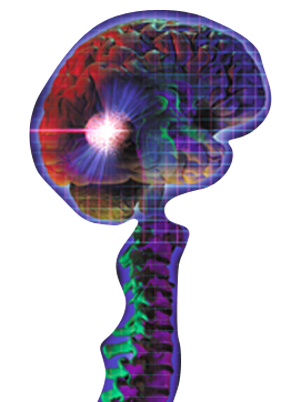• There are events that happen to us as children or adults that are so overwhelming and inherently frightening that they cause transient (temporary), and in some cases, permanent changes in our physical and psychological responses to stress. Thankfully, most of us have a relatively non-traumatic childhood and do not suffer many traumas as adults. However, when there is a significant traumatic event, everyone can expect to be temporarily overwhelmed and develop at least some of the symptoms of post traumatic stress disorder.
• Others, however, may be more biologically (inherently or genetically) vulnerable, have a history of more trauma, or are more directly and/or deeply affected by the trauma. Still, these people usually will have transient (temporary) symptoms of post traumatic stress syndrome that can be managed and treated effectively. In fact, in many cases, PTSD can be cured. Our treatment includes Color Therapy, EFT, EMDR and a Green Wave Therapy Technique in combination, to assist in releasing the trauma.
• Nevertheless, there is another small percentage of people who develop a more chronic (long duration) PTSD. Some of them may also develop other associated psychiatric disturbances that complicate the clinical picture of PTSD and make their full recovery more challenging. Finally, it is somewhat comforting to know that our various methods of treatment are highly effective and that we are trained clinicians experienced at handling the difficult problems of posttraumatic stress.
What is the scope of post traumatic stress disorder?
Sadly, the September 11th tragedy is only one recent causative (precipitating) event for post traumatic stress disorder. The scope of the PTSD problem in our society is actually substantial. For example, a current diagnosis of PTSD has been found in 15% of 500,000 men who were Vietnam veterans. Likewise, almost 18% of 10 million women who were victims of physical assault have PTSD. As a matter of fact, eight to 10% of the population will suffer from PTSD at sometime in their lives.
The consequences of PTSD for both the afflicted individual and society are significant. For example, studies have shown that patients with PTSD will have an increased number of suicides and hospitalizations. Also, patients with PTSD will have an increased frequency of alcohol abuse and drug dependency problems. In addition, we know that patients who have been victims of criminal acts subsequently have a much higher utilization of medical services in general. Most significantly, one third of PTSD patients will have related symptoms 10 years after the trauma. The majority of these people will also suffer from other psychiatric, marital, occupational, financial, and health problems.
What are the symptoms of PTSD?
In general, post traumatic stress disorder can be seen as an overwhelming of the body's normal psychological defenses against stress. Thus, after the trauma, there is abnormal function (dysfunction) of the normal defense systems, which results in certain symptoms. The symptoms are produced in three different ways:
1. Re-experiencing the trauma
2. Persistent avoidance
3. Increased arousal
First, symptoms can be produced by re-experiencing the trauma, whereby the individual can have distressing recollections of the trauma. For example, the person may relive the experience as terrible dreams or nightmares or as daytime flashbacks of the event. Furthermore, external cues in the environment may remind the patient of the event. As a result, the psychological distress of the exposure to trauma is reactivated (brought back) by internal thoughts, memories, and even fantasies. Persons also can experience physical reactions to stress, such as sweating and rapid heart rate. The patient's post traumatic symptoms can be identical to those symptoms experienced when the actual trauma was occurring.
The second way that symptoms are produced is by persistent avoidance. The avoidance refers to the person's efforts to avoid trauma-related thoughts or feelings and activities or situations that may trigger memories of the trauma. This so-called psychogenic (emotionally caused) amnesia (loss of memory) for the event can lead to a variety of reactions. For example, the patient may develop a diminished interest in activities that used to give pleasure, detachment from other people, restricted range of feelings, and a sad affect that leads to the view that the future will be shortened.
The third way that symptoms are produced is by an increased state of arousal of the affected person. These arousal symptoms include sleep disturbances, irritability, outbursts of anger, difficulty concentrating, increased vigilance, and an exaggerated startle response when shocked.
PTSD can occur at any age, although it is less frequent in the elderly. Young children who have suffered a trauma may have dreams of the event, which within a few weeks, turn into general nightmares. Children will often relive the event through play. They may also exhibit physical symptoms, such as headaches and stomach aches.
INSTRUCTIONS TO PATIENT: Below is a list of problems and complaints that people sometimes have in response to stressful experiences. Please read each one carefully, put an X in the box to indicate how much you have been bothered by that problem in the past month.
In addition to the usual psychotherapy approaches in assisting those with depression and/ or anxiety, we at Brain Breakthrough have access to the latest high tech instrumentation to accelerate the emotional release of the traumatic event history and beliefs formulated as a result of those experiences. We make use of EFT, EMDR, Color Therapy in conjunction with psychotherapeutic interventions, and a new and highly effective approach we call The Green Wave Therapy Solution (which utilizes green laser lights with left/right brain/body stimulation combined with a millimeter of microwave energy) all of which can facilitate the release of the trauma quickly and effectively indefinitely.
INSTRUCTIONS TO PATIENT: Below is a list of problems and complaints that people sometimes have in response to stressful experiences. Please read each one carefully, put an X in the box to indicate how much you have been bothered by that problem in the past month.
Click Here for an evaluation sheet.
